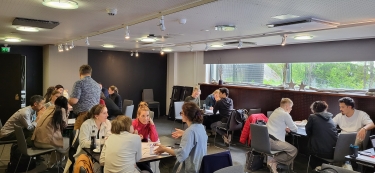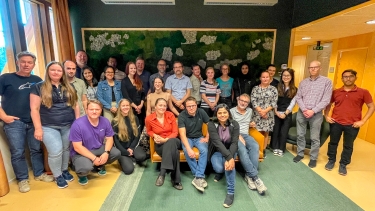Cities challenged to create sustainable future

Cities reflect the good, the bad and the ugly of our world. They represent our greatest challenges - they are the main cause of our human environmental footprint - but also offer our greatest opportunities. As innovation hubs, cities can take the lead in rethinking our economy, to ensure the creation of a sustainable future.
The 2018 Biocities Forum imagined a new urban reality with a symbiotic relationship between economy and biology creating sustainable and regenerative cities. Cities where wood, trees and forests have become their backbone: timber skyscrapers made of renewable resources, vertical forests that tower in dense urban areas, and paradigm shifts that emphasise ecosystem services provided by peripheral forests. These are just some of the ground-breaking ideas – and real-life case studies – that inspired attendees.
Organised by the European Forest Institute as part of the Smart City Expo World Congress on 14 November in Barcelona, the Biocities Forum contributed to the Congress focus on improving urban infrastructure and wellbeing, but with an important twist: nature. Göran Persson, former Prime Minister of Sweden, opened the Forum with the hope that we can “transform the globe into a more healthy and sound way of using our natural resources.”
EFI Director, Marc Palahí believes that this requires a “rethinking of our economy to ensure it prospers within the renewable boundaries of our planet”. He called on cities to lead this change, “not only in replacing fossil energy by renewable energy but also by taking the lead in replacing non-renewable materials like plastics, steel or concrete by renewable biobased materials, replacing grey infrastructures by green ones”. Through two dynamic sessions, both moderated by Economist writer James Astill, the Biocities participants explored ideas and actions that might do just that.
The first session brought together academics, planners, and engineers to share the newest innovations in Smart City technology geared towards connecting urban planning with natural systems. Herbert Girardet, a Professor and consultant for UNEP and UN-Habitat, emphasised the need for an ecosystem approach and increased public awareness about successful regenerative cities, which create environmentally enhancing, restorative relationships with the natural systems they depend on. Michael H. Ramage, a Senior Lecturer at Cambridge University, showed how timber is vastly under-imagined as a building material, sharing collaborations with architects from around the world on ever taller, more adaptive constructions in a mission to understand how timber can perform to the requirements of a modern building. Towers for trees, inhabited by humans, were brought vividly to life by Maria Chiara Pastore of Stefano Boeri Architects, with such structures holding the same number of trees as two hectares of forest and forming part of a future vision for cities networked by green corridors, roof-top lawns and community gardens. Green networks are indeed integral to the new vision of the Barcelona Metropolitan Area, presented by Eugènia Vidal Casanovas, to develop interconnected green spaces in the city, with particular focus on “planning for the edge” and the flows and interactions in and out of the territory. Social participation, accessibility, demand and cost are crucial factors for successful and widespread implementation, as questions from the audience at the end of the session highlighted.
In the second session, these sky-high concepts were grounded by the experience of a panel of mayors from cities and regions across Europe - Joensuu, Bonn, Milan, and Catalonia. The officials discussed their efforts to develop Biocities that elevate economic, social, and environmental value, as well as the opportunities and challenges they face. Many of the participants identified access to funding and the difficulty of coordinating policies across local, national, and international levels as key obstacles to transforming urban areas. As Gabriele Klingmüller, the Deputy Mayor of Bonn, highlighted, “cities cannot do all the work by themselves.”
In her closing remarks, Joanna Drake, the Deputy Director General of DG Environment in the European Commission, emphasised the need for collaboration, with networks and funding mechanisms to connect cities, compare experiences, and drive innovation. Echoing earlier comments from participants, citizens must be at the heart of this process, their voices should be heard and they must also assume some of the responsibility, so that Europe’s urban areas can push forward to build resilient, sustainable cities in the face of climate change.
The European Forest Institute has long been a proponent of bio-based development, urging policymakers and practitioners to find ways to integrate natural systems in regional planning. Borrowing the apt words of Economist W. Brian Arthur, EFI Director Marc Palahí stated succinctly: “our deepest hope as humans lies in technology; but our deepest trust lies in nature.”
The participants of the Biocities Forum are finding ways to have both.


